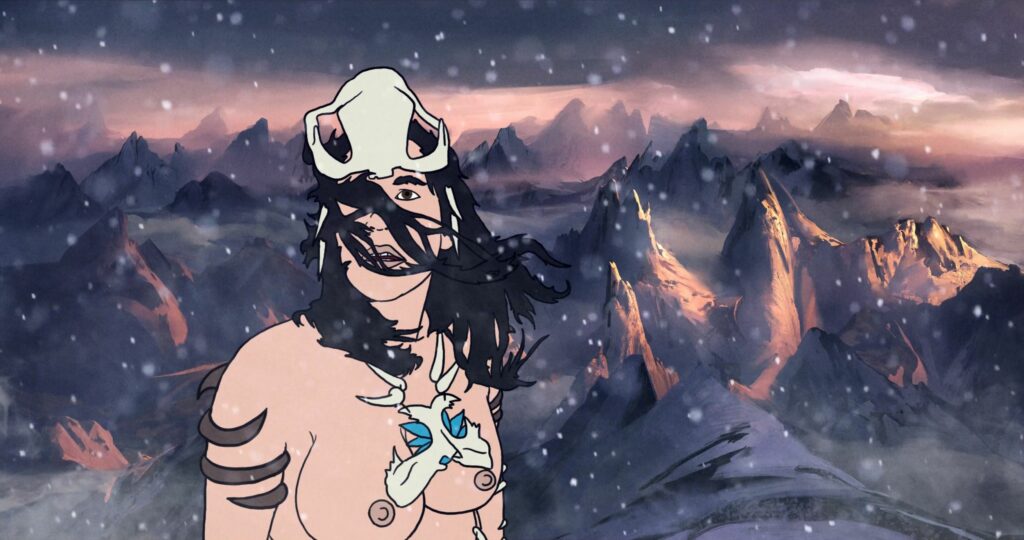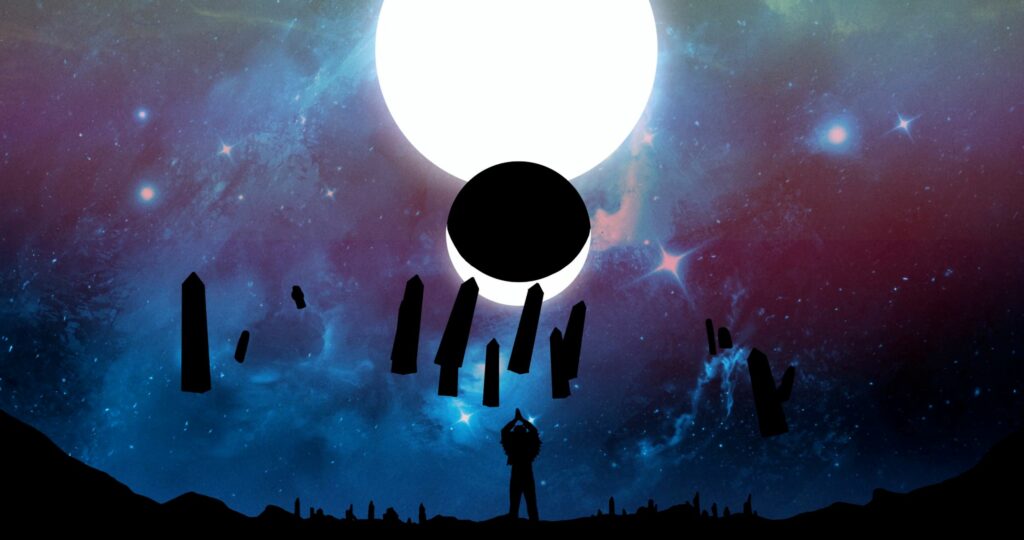Hard fantasy, especially animated hard fantasy, has had a peripheral presence in cinema for a good four decades. Gerald Potterton’s Heavy Metal is arguably the genre’s grandaddy, elements of which have been leaching into more mainstream entities – Castlevania and Blood of Zeus being recent examples.
The Spine of Night, written and directed by Philip Gelatt and Morgan Galen King, takes the genre firmly back to its zany, bloodthirsty roots. It offers a violent, X-rated romp that eagerly throws its viewer into the deep end of a difficult, morally murky world inhabited by aggressive deities, sorcery and unspeakable evil. Greater than a simple homage to its heritage but not quite a genre revolution, it is between the two that The Spine of Night happily plants itself.

Gelatt and King’s film centres on a number of key characters and recurring themes of corruption, sorcery and violence, within a series of vignettes spanning centuries. Recurring characters include the mad scholar and wizard Ghal-Sur (Jordan Douglas Smith), the swamp witch Tzod (Lucy Lawless) and the unnamed Guardian (Richard E. Grant).
Early in the epic narrative, Ghal-Sur steals a wreath of mystical blue flowers from Tzod, flowers which both grant immense power and corrupt the souls of whoever possesses them. The event proves the catalyst for years upon years of escalating violence, relayed to the viewer in snippets, as one being after the next becomes infected by this unstoppable lust for power.
The rotoscoped animation is a throwback to a time when genre adventures like The Spine of Night could still turn heads, shock and provoke. It may not possess that kind of influence anymore, but its distinctive style remains inviting, encouraging you to savour every moment of tension and every visceral death scene. While it may be quick to claim your attention however, it can’t quite seem to keep it.

At times, The Spine of Night will feature a queasy amount of detail and at others, will suffer from painting in too-broad strokes – in a latter instance, one drowning character is really just disappearing into a block sea of grey, eliciting no reaction. Other moments are so loaded with visual information that it becomes difficult to appreciate the full picture. That said, there are still moments throughout that relish the film’s stylistic essence; one highlight involves the flower guardian’s startling recollection of events past, a sequence that comes around the hour-mark and stays with you longer than any other scene.
The big-name voice cast all deliver. Asides from the lead three performances, Patton Oswalt and Betty Gabriel stand out in their respective roles, both of whom enjoy starring turns in the film’s best mini-story. Gelatt and King take care to upend the male-dominated tropes that hard fantasy has historically adopted, favouring a story that offers empowerment in opposition to violent lust. Yet in that respect, one can’t help but feel like the film could have gone much further. Instead, the subversions feel so contained that they might go unnoticed by most.

Contemporary animations need emotional depth to be a success, and sadly it is here that The Spine of Night falls down. It can’t offer much in the way of empathy or engagement, cycling through too many different stories for the viewer to invest emotionally in any of the characters. Certainly, Gelatt and King’s adventure is fantastic to look at and doesn’t hold back on delivering a healthy slice of bloodthirsty fun. Strictly in that sense, The Spine of Night achieves everything it wants to do. But this return to the genre’s rotoscoped glory days doesn’t deliver the emotional core it needs to stand out from the crowd.
The Spine of Night is out via Shudder from March 24th.
